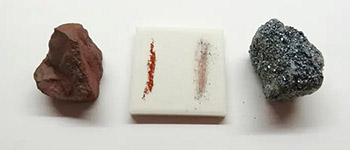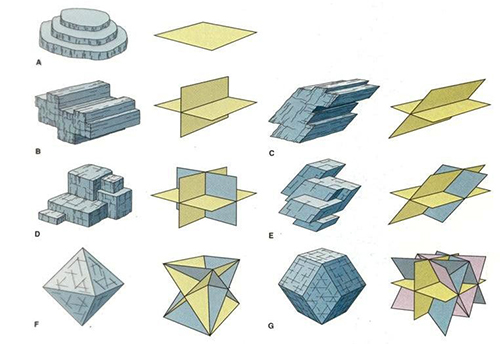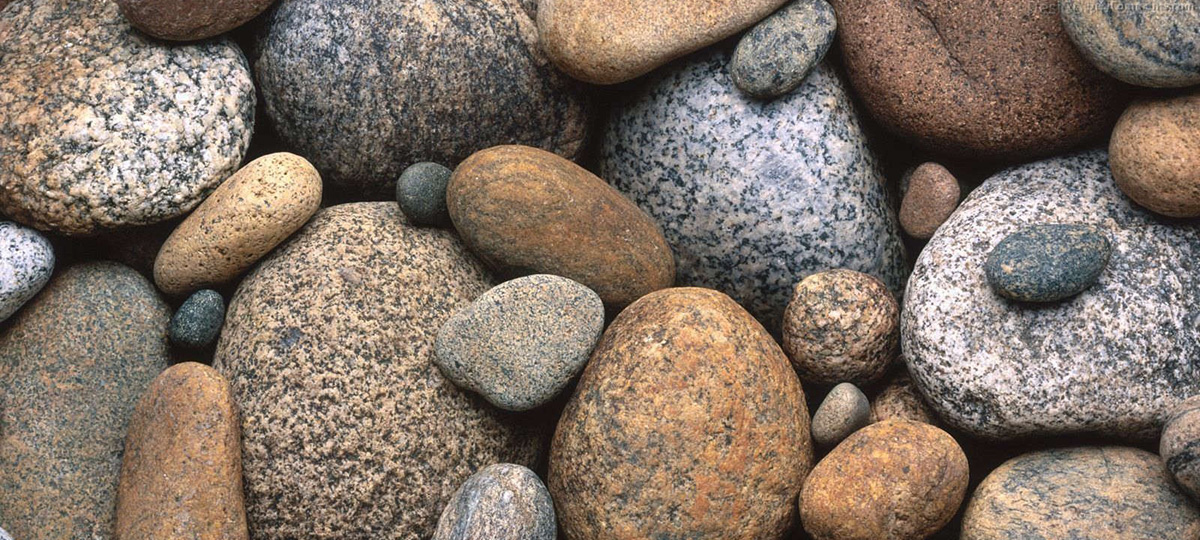Mineral identification is the process of determining the name and characteristics of a mineral specimen by using a variety of tests. It is an important process in geology, mineralogy, and other related fields, as it allows researchers to identify minerals and understand their properties and uses. There are several key characteristics that can be used to identify minerals, including their class, chemical formula, luster, hardness, streak, color, cleavage, and specific gravity.
By using these methods, mineral identification can help to distinguish between different types of minerals that may have similar physical appearances. Mineral identification is an important tool in mineralogy, geology, and other related fields because it can provide information about the composition, structure, and properties of minerals, which can be used in a variety of applications such as mining, mineral exploration, and material science.

Mineral Classes
Mineral class refers to the way in which minerals are grouped based on their chemical composition and crystal structure. There are several different mineral classes, each of which includes minerals with similar properties and characteristics.
- Silicates:
This is the largest and most important mineral class, accounting for approximately 90% of the Earth’s crust. Silicates are minerals that contain silicon and oxygen, and may also include other elements such as aluminum, magnesium, or iron. Examples of silicate minerals include quartz, feldspar, and mica. - Carbonates:
This mineral class includes minerals that contain carbonate ions (CO3) as part of their chemical structure. Carbonate minerals are often associated with sedimentary rocks and include minerals such as calcite and dolomite. - Sulfides:
This mineral class includes minerals that contain sulfur as part of their chemical structure, along with one or more metallic elements such as iron, copper, or lead. Sulfide minerals are often associated with ore deposits and include minerals such as pyrite, galena, and sphalerite. - Oxides:
This mineral class includes minerals that contain oxygen and one or more metallic elements. Oxide minerals are often associated with igneous and metamorphic rocks and include minerals such as magnetite, hematite, and rutile. - Halides:
This mineral class includes minerals that contain a halogen element (such as chlorine, fluorine, or iodine) along with one or more metallic elements. Halide minerals are often associated with evaporite deposits and include minerals such as halite and fluorite. - Sulfates:
This mineral class includes minerals that contain sulfate ions (SO4) as part of their chemical structure, along with one or more metallic elements. Sulfate minerals are often associated with evaporite deposits and include minerals such as gypsum and anhydrite.
Chemical Formula
Chemical formula is a notation used to represent the chemical composition of minerals, which is a crucial aspect of mineral identification. It consists of symbols for the elements present in the mineral, along with numerical subscripts that indicate the relative proportions of each element in the mineral’s chemical structure.
For example, the chemical formula for quartz is SiO2, which means that each unit of quartz contains one silicon atom (represented by the symbol Si) and two oxygen atoms (represented by the symbol O). This information is important for identifying the mineral because it distinguishes quartz from other minerals that may have similar physical properties but different chemical compositions.
Chemical formulas can also be used to identify minerals that have different crystal structures but the same chemical composition. For example, diamond and graphite both have a chemical formula of C (carbon), but they have vastly different physical properties due to their different crystal structures.
Luster
Luster is a term used to describe the appearance or quality of the way that light reflects off the surface of a mineral. It refers to the way that a mineral appears to shine or glow when exposed to light. The luster of a mineral is one of the most important characteristics used in mineral identification because it can help to distinguish between different types of minerals.
There are several types of luster, each of which has its own unique characteristics. Some common types of luster include:
- Metallic luster:
This type of luster is characterized by a shiny, reflective surface that resembles the appearance of metal. Minerals with metallic luster often have a gray, silver, or black color, and are often opaque. - Non-metallic luster:
This type of luster includes a wide variety of different characteristics, depending on the mineral. Some common types of non-metallic luster include vitreous (glassy), pearly, silky, waxy, and earthy. Minerals with non-metallic luster can be transparent, translucent, or opaque, and can be almost any color. - Sub-metallic luster:
This type of luster is similar to metallic luster, but is not as shiny or reflective. Minerals with sub-metallic luster often have a dark, dull appearance.
Luster is typically observed by holding the mineral up to a light source and examining its surface. The type of luster can provide important clues about a mineral’s identity, but it should be used in conjunction with other characteristics, such as color, hardness, and cleavage, to make a definitive identification.
Hardness
Hardness is a physical property of minerals that refers to their resistance to scratching and abrasion. It is an important characteristic used in mineral identification because it can help to distinguish between different types of minerals that may have similar physical appearances.
Minerals are assigned a hardness rating based on their ability to scratch or be scratched by other materials. The Mohs hardness scale, developed by German mineralogist Friedrich Mohs, is the most commonly used scale for determining mineral hardness. The scale ranges from 1 (softest) to 10 (hardest), with each number representing a mineral that is harder than the previous number.
For example, minerals with a hardness of 1 include talc and gypsum, which can be easily scratched with a fingernail. Minerals with a hardness of 5 include apatite and feldspar, which can scratch glass but are easily scratched by harder minerals. Minerals with a hardness of 10, such as diamond, are the hardest minerals and can only be scratched by other diamonds.
The hardness of a mineral can be determined by performing a scratch test. This involves trying to scratch the surface of a mineral with a material of known hardness. If the mineral is scratched, its hardness is lower than that of the material being used to scratch it. If the mineral is not scratched, its hardness is greater than or equal to that of the material being used to scratch it.

Streak
Streak is a physical property of minerals that refers to the color of the powdered form of a mineral. It is an important characteristic used in mineral identification because it can help to distinguish between different types of minerals that may have similar physical appearances.
To determine the streak of a mineral, a small piece of the mineral is rubbed against a hard, rough surface such as an unglazed porcelain plate or a piece of white paper. The resulting powder or “streak” is then examined for its color.

The streak of a mineral may be different from its external color or appearance. For example, a mineral may appear to be black, but its streak may be a reddish-brown color. This is because the color of a mineral’s streak is determined by the color of the mineral’s powder, which may be different from the color of the mineral’s external surface.
Streak can provide important clues about a mineral’s identity because it is a consistent characteristic that is not affected by external factors such as weathering or oxidation. The streak of a mineral can also help to distinguish between different types of minerals that may have similar external appearances but different internal compositions.
Color
Color is a physical property of minerals that refers to the way that minerals appear to the naked eye. It is one of the most basic characteristics used in mineral identification because it is easily observed, but it is also one of the least reliable characteristics, as minerals can have a wide range of colors and different minerals may have the same color.
The color of a mineral is determined by the way that it reflects and absorbs different wavelengths of visible light. Some minerals have characteristic colors that are useful in identification, such as sulfur, which is yellow, or malachite, which is green. However, many minerals can occur in a range of colors or may even be colorless.
External factors such as weathering, staining, or impurities can also affect the color of minerals, making it an unreliable characteristic for identification purposes. For example, quartz can occur in a range of colors including pink, purple, green, and brown, but it can also be colorless, and its color can be affected by impurities or staining.
Therefore, while color can provide some clues about a mineral’s identity, it should be used in conjunction with other characteristics such as streak, hardness, and crystal structure to make a definitive identification.
Cleavage
Cleavage is a physical property of minerals that refers to the way that a mineral breaks along planes of weakness in its crystal structure. It is an important characteristic used in mineral identification because it can help to distinguish between different types of minerals that may have similar physical appearances.
Minerals can exhibit different types of cleavage, depending on the arrangement of atoms within their crystal structure. Some common types of cleavage include:
- Perfect cleavage:
This type of cleavage occurs when a mineral breaks along flat, smooth planes with little resistance or deformation. Minerals with perfect cleavage include mica, halite, and calcite. - Imperfect cleavage:
This type of cleavage occurs when a mineral breaks along irregular, uneven planes with more resistance or deformation. Minerals with imperfect cleavage include feldspar and amphibole. - No cleavage:
Some minerals do not exhibit any cleavage and instead break in a random, irregular manner. Minerals with no cleavage include quartz and garnet.
The quality and direction of cleavage can be determined by observing the way that a mineral breaks when struck with a hammer or other hard object. The resulting fractures can be examined under a microscope or hand lens to identify the planes of weakness in the crystal structure.
Cleavage can provide important clues about a mineral’s identity because it is a consistent characteristic that is not affected by external factors such as weathering or impurities. The type and quality of cleavage can help distinguish between different types of minerals that may have similar physical appearances.

Specific Gravity
Specific gravity is a physical property of minerals that refers to the ratio of the mass of a mineral to the mass of an equal volume of water at a specified temperature. It is an important characteristic used in mineral identification because it can help to distinguish between different types of minerals that may have similar physical appearances.
The specific gravity of a mineral is determined by comparing its weight in air to its weight when submerged in water. This ratio is expressed as a number, with water having a specific gravity of 1. Minerals with a higher specific gravity will feel heavier for their size than minerals with a lower specific gravity.
The specific gravity of a mineral can provide important clues about its identity, as different minerals have different specific gravities. For example, gold has a specific gravity of approximately 19.3, while pyrite has a specific gravity of approximately 5.0. This means that a piece of gold will feel much heavier for its size than a piece of pyrite of the same size.
Specific gravity can also be used to help identify minerals that may have similar physical appearances. For example, hematite and magnetite are both dark, metallic minerals that can be easily confused with each other. However, hematite has a specific gravity of approximately 5.0, while magnetite has a specific gravity of approximately 5.2, which can help to distinguish between the two minerals.

Featured Posts
-

Rock Identification
Rock identification is the process of examining and analyzing a rock’s physical and chemical characteristics in order to determine its type, composition, and history. This …
-

Rock Cycle
The rock cycle is a geological process that illustrates the continuous transformation and interaction among the three major types of rocks: igneous, sedimentary, and metamorphic. …
-

Rock Basics
Rocks are naturally occurring, solid aggregates of minerals that make up a significant portion of the Earth’s crust. They are formed through various geological processes …
-

Mohs Hardness Scale
The Mohs Hardness Scale is a universally recognized tool used to classify the hardness of minerals based on their ability to scratch one another. Developed …

